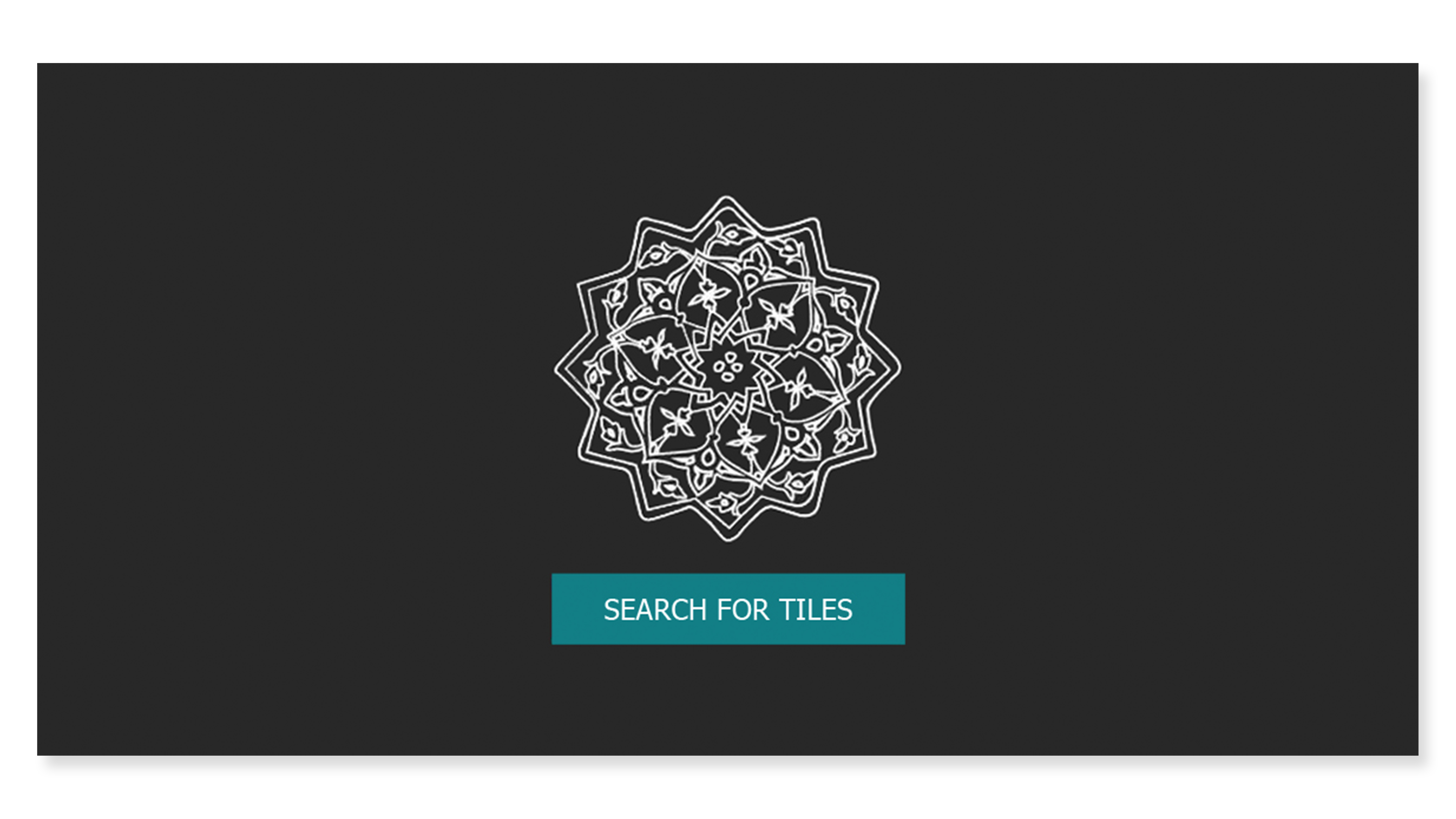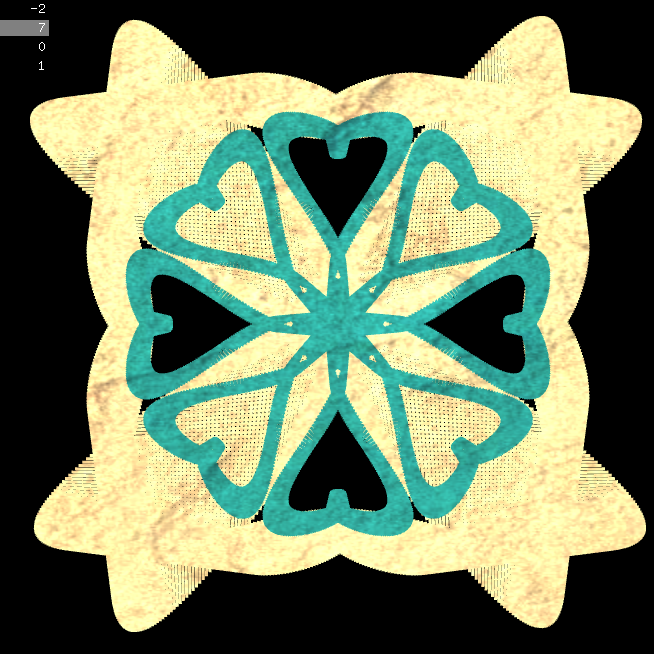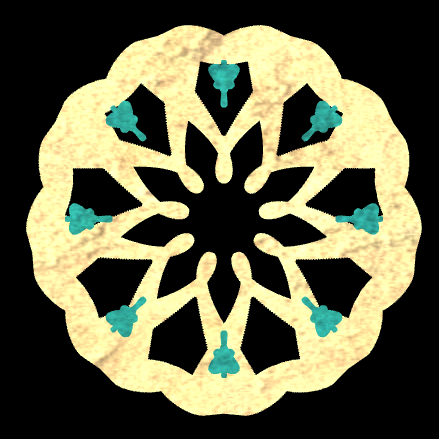A participatory museum experience
Incorporating augmented reality in gallery spaces for education
Role:Designer, Developer
Showcase:Metropolitan Museum of Art Digital Media Lab Expo
Date:2014
Skill:OpenFrameworks
Blog:www.metmuseum.org/blogs/digital-underground

The Patti Cadby Birch Moroccan Court (1350-1400)
in the Islamic art wing
Introduction to Islamic Art
The Metropolitan Museum of Art's whopping fifteen galleries for Islamic Art are some of the most visually striking in the entire Museum. The galleries include Art of the Arab Lands, Turkey, Iran, Central Asia, and Later South Asia. Located on the second floor of the North Wing, visitors are greeted by elaborate patterns carved and painted on many objects — from ceramic bowls to tapestries and to swooping arches. Tiles tessellate in repeated patterns across the walls and in one room, the ceiling is covered with intricately carved geometric patterns. With a collection of over twelve thousand objects, these galleries illustrate the fascinating diversity of the art and culture of Islam.
Islamic art is largely aniconic, meaning it avoids the depiction of figures. The opposition to figures "stems from the belief that the creation of living forms is unique to God." [1] Consequently, Islamic art is dominated by complex geometric patterns, arabesques (patterns based on foliage), and forms inspired by calligraphy.
While the creation of ancient Islamic patterns such as the "star" were trade secrets by artisans, Islamic art is considered one of the earliest instances of art to use algorithmic foundations. Algorithmic art is generated through a step-by-step sequence of formal equations and the repetitive patterns found in Islamic art beautifully illustrate this concept. In order to create the stunning ornamentation, artisans needed to be skilled in analytical geometry [2].
The Concept
Exploring Algorithms in Islamic Art was a two-month long collaborative project between me and Sarah Wever. We are passionate about using technology to supplement the understanding of artworks in a way that was engaging and educational. In particular, we wanted to incorporate participatory elements into the gallery spaces to enhance the museum experience for visitors.
The exceptional patterns in the Islamic Art gallery caught our attention. In the gallery, we also found a brochure for students to learn about the importance of geometry by tracing and tesselating their own designs in the brochure. This sparked our inspiration to focus on the idea of algorithms in art. Since the Islamic Art galleries at the Met contain many single tiles and incomplete fragments, we asked ourselves:
The concept we came up with was to:
Create a way for the visitors to study and manipulate the geometry of the Islamic art, allowing them to generate new patterns according to rules based on the original design
We decided to tackle these ideas was with augmented reality — a technology that adds to the world we see around us by superimposing graphics. In our case, decided to create an iPad app. An iPad can easily be carried around in the gallery and the larger screen allows for the visitor to design their patterns more easily. In addition, by using the iPad we could take advantage of the device's built-in camera and make use of a live feed of the original artworks.
Our prototype
We began by coding very basic patterns in Processing, a programming language based in Java. We attempted to recreate various patterns found in the gallery, such as this pair of Minbar doors.
After the initial prototype, we then switched to OpenFrameworks, a C++ toolkit for creative coding, and created a prototype that could be used on an iPad. Because OpenFrameworks works with xCode, it made the process of exporting projects as an app for iOS much easier.
We knew we were not able to initially test our prototype with the gallery space itself, so we meticulously laser-cut the Carved Star Tile and the Twelve-Pointed Star-Shaped Tile found in the department's collection. To cut these tiles we took hi-res images of the stars provided by the Met and Sarah traced over their patterns in Illustrator. The iPad would then use object recognition to recognize our tiles.
A comparison between the gallery's collection and our laser cut imitations
To use the app, the visitor first selects "Search for Tiles", opening up the camera app. When the visitor holds the iPad camera up to the tiles, the app recognizes the pattern and opens the interface with the digital version of the tile.
I coded the interface that allows visitors to change the values in the algorithmic equations, thus creating new "tiles" of their own. Various values are displayed as slider in the upper left hand corner. Visitors can change properties such as number of points, inner and outer tile size and warp. The visitors can also toggle between manipulating a single tile or manipulating a tesselated version.
Screenshots
Future iterations
The background of the prototype is currently black, rather than transparent as we originally intended, because continuously running the camera slows down the application. In the future, we hope to create a true augmented reality experience in the museum, experimenting with more advanced technology such as the Moverio Smart Glasses. We had the opportunity to use the Moverio Glasses when Sean McCracken from Epson spent a few days in the Media Lab to demo the glasses for us. The Moverio a concept similar to Google Glass, but instead of the view being off to the side, the augmented images are directly in front and allow for true augmented reality.
We also hope to incorporate the ability for visitors to save and share their creations. In addition, we would like to experiment with other mediums of art, such as ceramics or tapestries.
We believe that incorporating participatory elements into the Museum's gallery spaces would enhance the museum experience for visitors in a unique and enriching way, creating new avenues of learning for visitors of all ages that is both fun and educational.
The true benefit of this project was having direct contact with the Met's extensive collection and receiving incredible inspiration from the Museum's staff. The project culminated with an installation and presentation to the Met staff and visitors.














